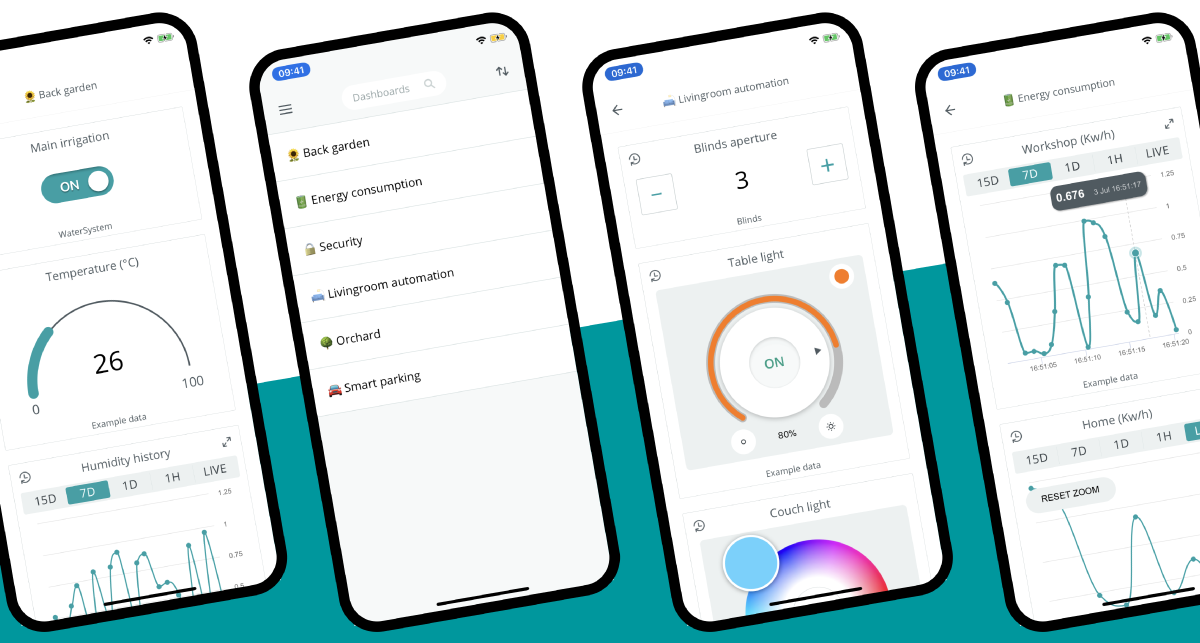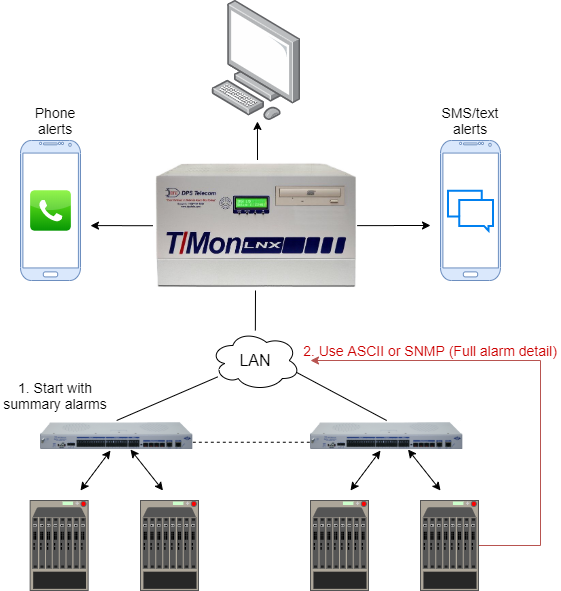Ever feel chained to your desk when you need to keep a watchful eye on your IoT deployments? The ability to remotely monitor and control your IoT devices is no longer a luxury, but a necessity in today's fast-paced world.
The burgeoning Internet of Things (IoT) landscape demands tools that provide seamless oversight, actionable insights, and robust security. With the number of IoT devices projected to skyrocket from $15.14 billion in 2023 to a staggering $29.42 billion by 2030, the need for effective "IoT device remote monitor app" and management solutions is escalating exponentially. This surge necessitates platforms that can handle the growing complexity and volume of data generated by these interconnected devices.
One compelling solution is the Arduino IoT Remote Phone application, designed to grant users complete control and monitoring capabilities over their Arduino Cloud dashboards. This application not only allows for real-time observation but also leverages the phone's internal sensors, such as GPS data, light sensors, and IMU, depending on the device's capabilities. By synchronizing the phone's sensor data with the cloud through its phone device feature, users can effectively transform their mobile devices into integrated IoT components within their Arduino Cloud projects.
- Unlock Iot Devices Secure Remote Access Management Guide
- Jenni Rivera Crash Secrets Autopsy Report Findings
Imagine developing your IoT solutions on a desktop and then seamlessly transitioning to mobile monitoring and control. The Arduino IoT Cloud Remote app facilitates precisely this, offering a versatile platform for managing distributed products from a centralized interface. This unified approach enables users to optimize their products, create automated maintenance protocols, and establish alarms and notifications, all from the convenience of their mobile devices.
Beyond specific applications, the broader ecosystem of IoT management platforms offers a range of functionalities tailored to diverse needs. For instance, SocketXP provides a cloud-based solution for managing and remotely accessing IoT devices, Raspberry Pi fleets, and other Linux machines situated behind NAT routers and firewalls. This level of access is critical for maintaining the health and security of IoT deployments.
IoT monitoring tools, in general, encompass software applications and platforms meticulously crafted to track and maintain IoT networks, devices, and applications. These tools deliver crucial insights into the health, performance, and security of IoT deployments, empowering administrators to ensure reliability, efficiency, and security across their IoT ecosystems. Effective monitoring is paramount, enabling managers to oversee IoT networks through dashboards that aggregate data extracted from various devices within the IoT infrastructure. These dashboards often visualize data through charts, graphs, and user interface elements like maps, enhancing comprehension and facilitating informed decision-making.
- Amy Roloff A Life Legacy Beyond The Little People Big World
- John Heilemanns Health Unconfirmed Rumors Facts Unveiled
The landscape of remote IoT API options is vast, encompassing robust platforms such as AWS IoT, Google Cloud IoT, and Azure IoT. Each of these platforms provides unique capabilities for managing and monitoring IoT devices, catering to different scales and requirements. AWS IoT Device Management, for instance, enables secure onboarding, organization, monitoring, and remote management of IoT devices at scale. The process involves registering devices and establishing secure connections, ensuring the integrity and confidentiality of data transmission.
Lets delve into the practical aspects of remote control options for IoT devices. Most IoT devices are designed to pair seamlessly with specific applications that users can readily install on their smartphones. Once connected, these apps grant users the ability to adjust device settings, monitor data outputs, receive timely notifications, and even exert remote control over the devices. This level of interactivity empowers users to manage their IoT devices from virtually anywhere.
For those seeking comprehensive solutions, Internet of Things (IoT) device management platforms are essential. Choosing the right platform requires careful consideration of factors such as scalability and security features. These platforms serve as the backbone for managing and maintaining large-scale IoT deployments, providing functionalities ranging from device provisioning and configuration to remote monitoring and software updates.
In healthcare, the deployment of IoT in remote patient monitoring has yielded significant advantages, ranging from enhanced accessibility and reduced response times to accurate diagnoses and minimal administrative paperwork. This technological integration is transforming healthcare delivery, enabling real-time monitoring of patients' vital signs and remote consultations, ultimately improving patient outcomes and reducing healthcare costs.
The automation capabilities within IoT systems are also noteworthy. Users can create automated behaviors using rules, generating alerts and directly controlling devices based on live data. These rules can be configured through intuitive drag-and-drop interfaces or, for more advanced users, through scripting tools. This flexibility empowers users to tailor the behavior of their IoT systems to meet specific requirements and optimize performance.
The question of cost is often a primary concern. The Arduino IoT Cloud Remote app, for instance, is free to download and use. However, certain features, such as the "phone as device" functionality in background mode, require a paid plan, specifically the Maker Plan. Understanding the pricing structure and the features included in each plan is crucial for making informed decisions about platform selection and usage.
Crucially, the data visualization capabilities of IoT dashboards are pivotal for effective monitoring. These dashboards transform raw data into actionable insights through intuitive charts, graphs, and other UI elements. This visual representation enables users to quickly identify trends, anomalies, and potential issues, facilitating proactive intervention and optimization.
Here's a deeper look into the functionality and benefits of leveraging these remote monitoring and management tools:
- Enhanced Accessibility and Control: Users can remotely access and control their IoT devices from anywhere in the world, provided they have an internet connection. This capability is crucial for managing deployments in remote or hard-to-reach locations.
- Real-Time Data Monitoring: IoT platforms provide real-time data streams from connected devices, allowing users to monitor performance metrics, environmental conditions, and other critical parameters.
- Automated Alerts and Notifications: The ability to configure automated alerts and notifications based on predefined thresholds is essential for proactive issue management. Users can receive alerts via email, SMS, or mobile app notifications, enabling them to respond quickly to potential problems.
- Remote Diagnostics and Troubleshooting: IoT monitoring tools often include diagnostic capabilities that allow users to remotely troubleshoot issues and identify root causes. This remote access can significantly reduce downtime and maintenance costs.
- Over-the-Air (OTA) Updates: Many IoT platforms support OTA updates, allowing users to remotely deploy software updates and firmware upgrades to their devices. This feature ensures that devices are running the latest software versions and are protected against security vulnerabilities.
- Scalability and Flexibility: The best IoT management platforms are designed to scale to accommodate growing deployments. They offer flexible pricing plans and customizable features to meet the evolving needs of users.
- Security Features: Security is paramount in IoT deployments. Robust IoT platforms incorporate security features such as encryption, authentication, and access control to protect devices and data from unauthorized access.
To further illustrate the capabilities of IoT monitoring tools, consider a few real-world use cases:
- Smart Agriculture: Farmers can use IoT sensors to monitor soil moisture, temperature, and other environmental conditions. Remote monitoring tools allow them to track crop health, optimize irrigation, and improve yields.
- Industrial Automation: Manufacturers can use IoT sensors to monitor equipment performance, detect anomalies, and predict maintenance needs. Remote monitoring tools enable them to optimize production processes, reduce downtime, and improve overall efficiency.
- Smart Cities: Cities can use IoT sensors to monitor traffic flow, air quality, and energy consumption. Remote monitoring tools enable them to optimize resource allocation, improve public safety, and enhance the quality of life for residents.
- Healthcare: Healthcare providers can use IoT devices to monitor patients' vital signs, track medication adherence, and provide remote care. Remote monitoring tools enable them to improve patient outcomes, reduce hospital readmissions, and lower healthcare costs.
In conclusion, the realm of IoT device remote monitoring and management is dynamic and rapidly evolving. By leveraging the right tools and platforms, organizations can unlock the full potential of their IoT deployments, driving innovation, efficiency, and growth.



Detail Author:
- Name : Henri Nitzsche MD
- Username : daisha90
- Email : stanton.alba@powlowski.com
- Birthdate : 1978-06-06
- Address : 13457 Stephen Shore Bodechester, AL 67163-8792
- Phone : 1-313-556-6804
- Company : Emard, Stamm and O'Kon
- Job : Private Household Cook
- Bio : Modi possimus deserunt porro enim quia nostrum. Et velit non et rerum maiores. Nobis in labore qui voluptas saepe sit. A eos qui quod fugiat. Eaque aliquam dolore atque ratione.
Socials
tiktok:
- url : https://tiktok.com/@saigekessler
- username : saigekessler
- bio : Nemo ducimus debitis vero iste iusto alias sed.
- followers : 4537
- following : 345
facebook:
- url : https://facebook.com/saige_id
- username : saige_id
- bio : Incidunt omnis at natus voluptas dolores et iure.
- followers : 5938
- following : 1903